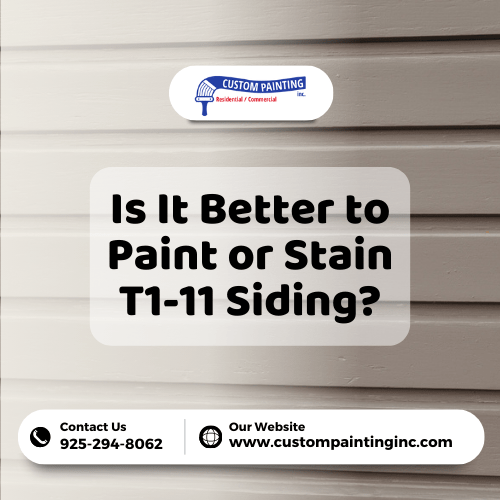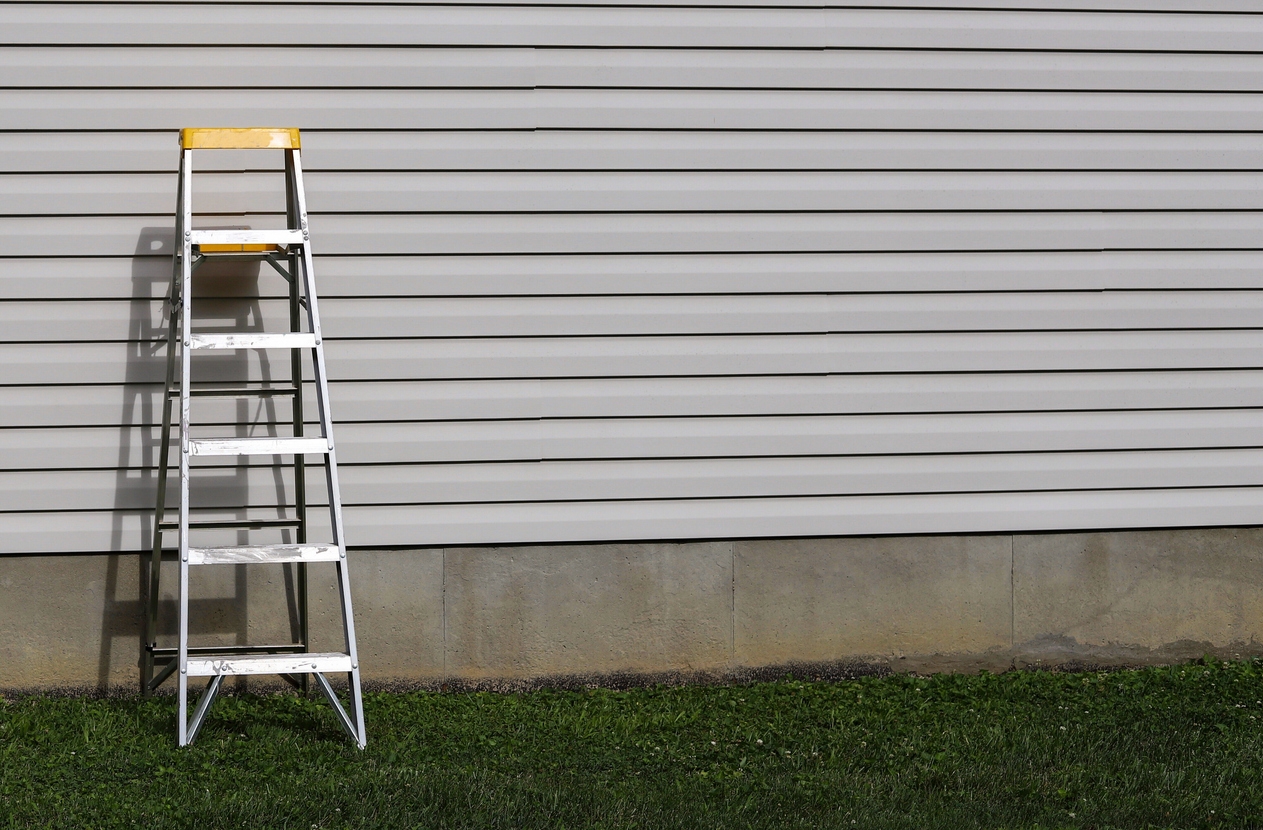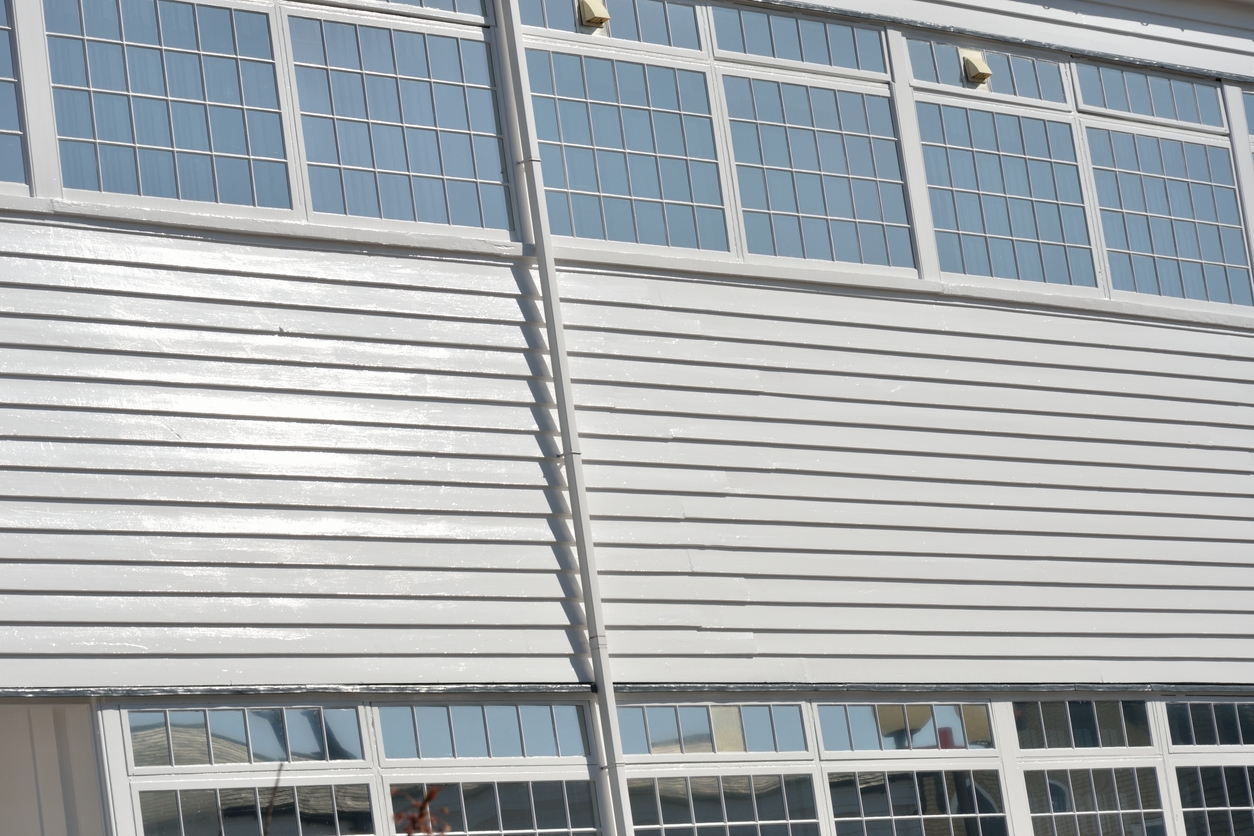Choosing between painting or staining T1-11 siding can be challenging for homeowners. Each option offers unique benefits and drawbacks. Painting provides a durable, weather-resistant finish that can last for years. Staining, on the other hand, enhances the natural beauty of the wood while protecting it from the elements.
In this article, we’ll break down the pros and cons of both methods, helping you make an informed decision for your home’s exterior. Clear, concise, and straightforward – let’s explore what’s best for your siding. Protect and beautify your building’s exterior with durable T1-11 siding painting by seasoned professionals.
Understanding T1-11 Siding
When it comes to choosing siding for your home or outbuilding, T1-11 stands out for its distinctive look and practicality. Known for its rustic appearance and durability, T1-11 siding offers an appealing option for many homeowners. Let us explore its characteristics and common uses further.
Description of T1-11 Siding
T1-11 siding is made from either plywood or oriented strand board (OSB). Its surface is grooved to replicate the appearance of traditional wood siding. This grooved texture not only enhances its rustic look but also aids in water drainage. The main reasons for its popularity include:
- Durability: T1-11 siding is known for its strength and longevity.
- Affordability: Compared to other types of siding, T1-11 is cost-effective.
- Aesthetic Appeal: The natural wood look makes it a favorite for rustic and cabin-style homes.
Typical Environments for T1-11 Siding
T1-11 siding is often found in environments where both durability and affordability are key. Common applications include:
- Sheds and Barns: Its sturdy nature makes it ideal for outbuildings.
- Rustic Homes: Perfect for achieving a cabin-like appearance.
- Garages and Workshops: Its easy installation and robustness are big pluses.
Importance of Proper Finishing
Proper finishing of T1-11 siding is crucial to maximize its lifespan and maintain its appearance. Without adequate sealing, T1-11 can absorb moisture, leading to rot and decay. Here’s why finishing is important:
- Protection Against Elements: A good finish protects the wood from rain, snow, and sun.
- Prevention of Water Penetration: Sealing the siding prevents moisture from causing damage.
- Maintaining Appearance: Finishing helps preserve the natural beauty of the wood.
Whether you choose to paint or stain your T1-11 siding, ensuring it is well-finished will enhance its durability and keep your building looking great for years to come.
The Case for Painting T1-11 Siding
Painting T1-11 siding offers several benefits that can enhance both the look and durability of your home. From a wide range of color options to robust protection against the elements, painting is a practical and appealing choice for many homeowners.
Advantages of Painting T1-11 Siding
- Variety of Color Choices: One of the biggest advantages of painting T1-11 siding is the endless variety of color options. This allows homeowners to choose a color that perfectly matches their aesthetic preferences and complements the rest of their home’s exterior.
- Thicker Protective Layer Against Moisture: Paint provides a thick, protective layer that shields the wood from moisture. This is particularly important for T1-11 siding, which can be vulnerable to water damage if not properly sealed.
- Extending the Lifespan: By creating a barrier against water infiltration, paint helps prevent rot and decay and can shorten the lifespan of T1-11 siding. A well-applied coat of paint can significantly extend the life of your siding, saving you money on repairs and replacements in the long run.
Process of Painting T1-11 Siding
Necessary Preparation Steps
- Cleaning: Start by thoroughly cleaning the siding to remove dirt, mildew, and any loose or peeling paint. Use a pressure washer or a scrub brush with a mild detergent solution. Allow the siding to dry completely.
- Priming: Apply a high-quality primer specifically designed for wood surfaces. Primer helps the paint adhere better and provides an additional layer of protection against moisture. Ensure that the primer is fully dry before moving on to painting.
Recommended Types of Paint and Application Methods
- Types of Paint: Use exterior-grade acrylic latex paint for the best results. This type of paint is durable, flexible, and resistant to harsh weather conditions.
- Application Methods: You can apply the paint using a brush, roller, or sprayer. A brush or roller is ideal for smaller areas and detailed work, while a sprayer is efficient for larger surfaces. Apply at least two coats of paint, allowing each coat to dry thoroughly before applying the next.
By following these steps and using the right materials, you can ensure a smooth and long-lasting finish for your T1-11 siding. Painting not only enhances the appearance of your home but also provides essential protection that can prolong the life of your siding.
The Case of Staining T1-111 Siding
Staining T1-11 siding is an excellent choice for those who want to maintain the natural beauty of the wood while providing essential protection. Staining offers unique benefits that make it an attractive alternative to painting.
Advantages of Staining T1-11 Siding
- Preserve Natural Wood Look: Staining enhances and preserves the natural wood appearance of T1-11 siding. It highlights the wood grain and texture, giving your home a warm, rustic charm that paint cannot replicate.
- Penetrates Wood for Protection: Unlike paint, which sits on the surface, stain penetrates deep into the wood. This deep penetration helps protect the wood from within, reducing the risk of peeling and flaking. This intrinsic protection can extend the lifespan of your siding.
- Easier to Reapply: Staining is generally easier to reapply than paint. When it’s time to refresh the look or add another protective layer, staining requires less preparation and effort. This ease of maintenance makes it a convenient option for homeowners.
Process of Staining T1-11 Siding
Necessary Preparation Steps
- Cleaning: Begin by thoroughly cleaning the siding to remove any dirt, mold, or mildew. Use a pressure washer or scrub with a mild detergent solution. Ensure the siding is completely dry before proceeding.
- Possible Pre-Treatment: Depending on the condition and type of wood, you may need to apply a wood conditioner or pre-stain treatment. This step helps ensure even absorption of the stain and prevents blotching.
Recommended Types of Stain and Application Methods
- Types of Stain: Choose a high-quality exterior wood stain. There are two main types: semi-transparent and solid. Semi-transparent stains allow the natural wood grain to show through, while solid stains provide more color and protection but cover the wood grain more like paint.
- Application Methods: Apply the stain using a brush, roller, or sprayer. A brush is ideal for detailed areas and edges, while a roller or sprayer can cover large areas more efficiently. Apply at least two coats, allowing each coat to dry thoroughly before applying the next.
By following these steps and using the appropriate stain, you can achieve a beautiful, durable finish for your T1-11 siding. Staining not only preserves the natural beauty of the wood but also provides essential protection, making it a practical and aesthetically pleasing choice for homeowners.
Comparing Longevity and Maintenance
Choosing between painting and staining T1-11 siding involves considering both the longevity and maintenance requirements of each option. Here, we compare the durability and upkeep efforts needed for painted and stained siding.
Durability Comparison: How Often Will You Need to Repaint or Restain?
- Painting: Paint generally provides a thicker, more protective layer than stain. This added protection can make the paint last longer under harsh weather conditions. On average, a high-quality paint job on T1-11 siding can last between 7 to 10 years before needing a fresh coat. However, this can vary depending on the climate and exposure to elements.
- Staining: Stains, especially semi-transparent ones, penetrate the wood rather than forming a surface layer. This deep penetration provides good protection but may require more frequent reapplication compared to paint. Typically, you will need to restain T1-11 siding every 3 to 5 years. Solid stains can last longer, up to 6 years, but still generally require more frequent maintenance than paint.
Inspection Frequency
Both painted and stained T1-11 siding should be inspected regularly to ensure they are in good condition.
- Painted Siding: Inspect annually for any signs of peeling, cracking, or fading. Addressing these issues early can prevent more significant problems and prolong the lifespan of the paint job.
- Stained Siding: Similarly, stained siding should be inspected annually. Look for signs of fading, wear, or mildew. Semi-transparent stains may show wear more quickly, so regular inspection is crucial.
Upkeep Efforts
Painted Siding
- Cleaning: Painted siding requires occasional cleaning to remove dirt and mildew. This can typically be done with a garden hose and a mild detergent.
- Touch-Ups: Address any areas of peeling or cracking paint promptly to prevent moisture from penetrating the wood.
- Repainting: Repainting every 7 to 10 years involves more preparation and effort compared to restaining. You’ll need to scrape off loose paint, sand the surface, and apply primer before repainting.
Stained Siding
- Cleaning: Like painted siding, stained siding needs periodic cleaning. Use a mild detergent and a soft brush or pressure washer.
- Reapplication: Restaining is generally less labor-intensive than repainting. You may only need to clean the surface and apply a new coat of stain without extensive scraping or sanding.
- Mildew Treatment: Stains can sometimes promote mildew growth, so treating and removing mildew as needed is important.
Cost Considerations
When deciding between painting and staining T1-11 siding, it’s important to consider both the initial costs and the long-term financial implications. Each option has its own cost profile, influenced by materials, labor, and maintenance frequency.
Painting
- Materials: High-quality exterior paint is generally more expensive than stain. You will also need to purchase primer, which adds to the initial cost.
- Labor: Painting requires more preparation, including cleaning, priming, and applying multiple coats of paint. This can increase labor costs, whether you do it yourself or hire professionals.
- Equipment: Additional tools like brushes, rollers, or sprayers, as well as drop cloths and painter’s tape, contribute to the overall cost.
Staining
- Materials: Exterior wood stains are typically less expensive than paint. Semi-transparent stains are usually cheaper than solid stains.
- Labor: Staining generally involves less preparation compared to painting. The process is quicker since it doesn’t require priming, which can reduce labor costs.
- Equipment: The tools needed for staining are similar to those for painting but may include fewer items like primer, potentially lowering the initial expense.
Long-Term Cost Implications Based on Maintenance and Longevity
Painting
- Maintenance Frequency: Paint generally lasts longer, needing reapplication every 7 to 10 years. This longer lifespan means fewer applications over the lifetime of the siding.
- Maintenance Costs: Although paint lasts longer, the cost of repainting is higher due to the extensive preparation and the higher price of paint. Over a period of 20 years, you might need to repaint twice, incurring substantial costs each time.
- Total Long-Term Costs: The higher initial investment and the higher cost per maintenance cycle can add up. However, the extended durability of paint may balance these costs over time.
Staining
- Maintenance Frequency: Stains need to be reapplied more frequently, typically every 3 to 5 years for semi-transparent stains and up to 6 years for solid stains.
- Maintenance Costs: Although staining is less labor-intensive and materials are cheaper, the more frequent need for reapplication can increase long-term costs. Over 20 years, you might need to restain four to six times.
- Total Long-Term Costs: While each individual staining project is less expensive, the cumulative cost over time may be higher due to the frequency of reapplication.
Painting has higher initial costs due to more expensive materials and labor-intensive preparation. Over time, the frequency of maintenance becomes a key factor. Painting has fewer but more expensive maintenance cycles. Staining requires more frequent but less costly maintenance efforts.
Conclusion
Choosing between painting and staining T1-11 siding depends on your preferences for appearance, durability, and maintenance. Painting offers a wide range of colors and longer protection, while staining preserves the natural wood look and is easier to reapply. Both options have their benefits and costs, so consider your needs and budget carefully.
Serving the Bay area including the cities of Bay Point, Diablo, Milpitas, Mountain House and Newark. For expert advice and professional service, contact Custom Painting, Inc. Call 925-294-8062 or use the contact form on our website. We’re here to help you make the best choice for your home.



